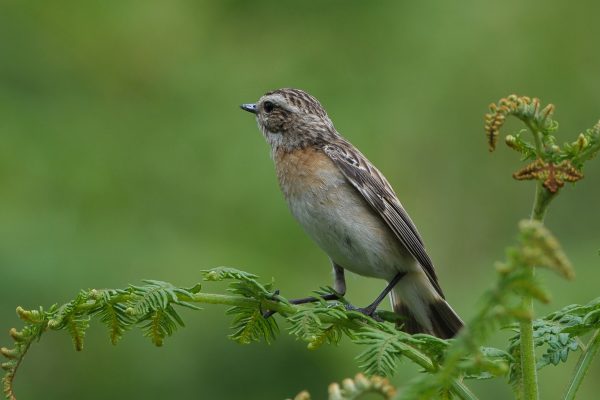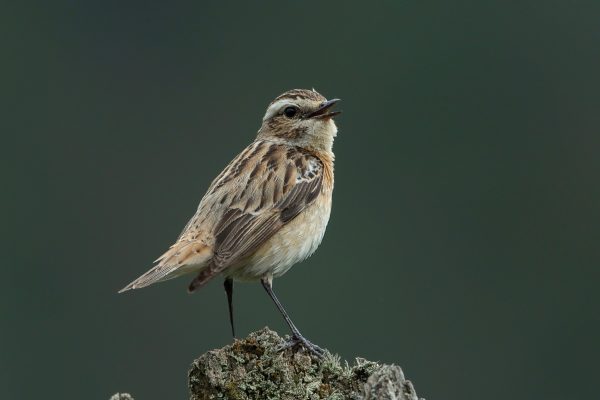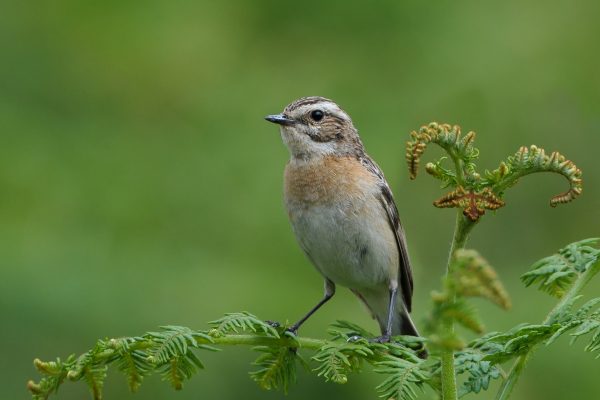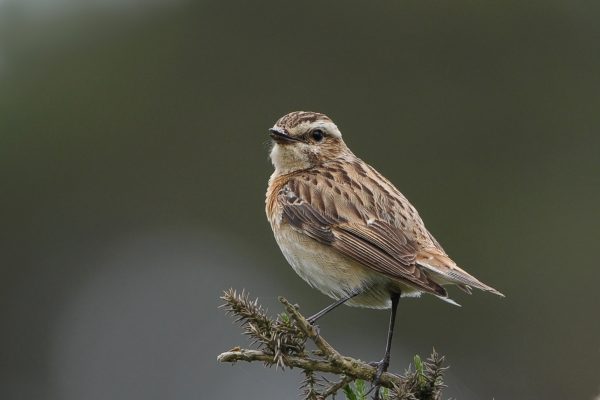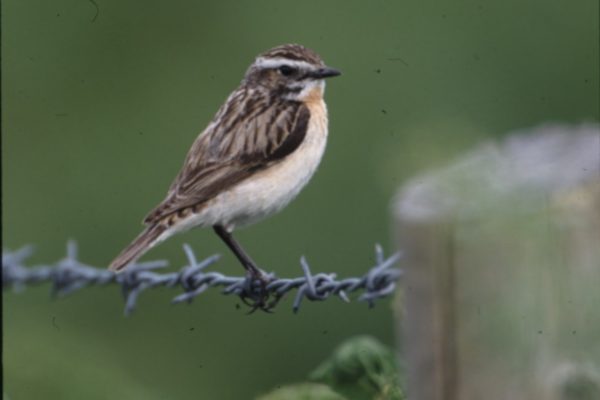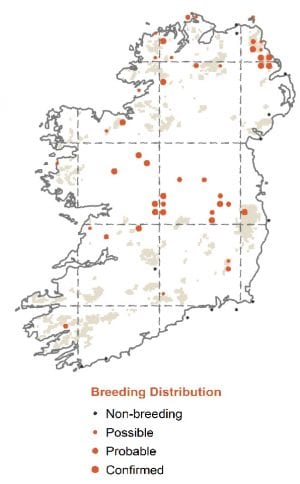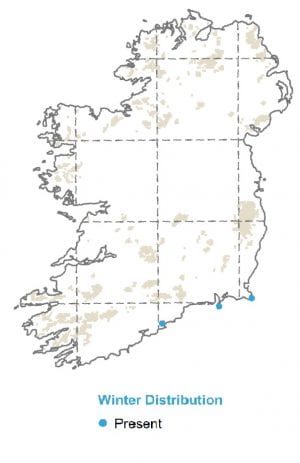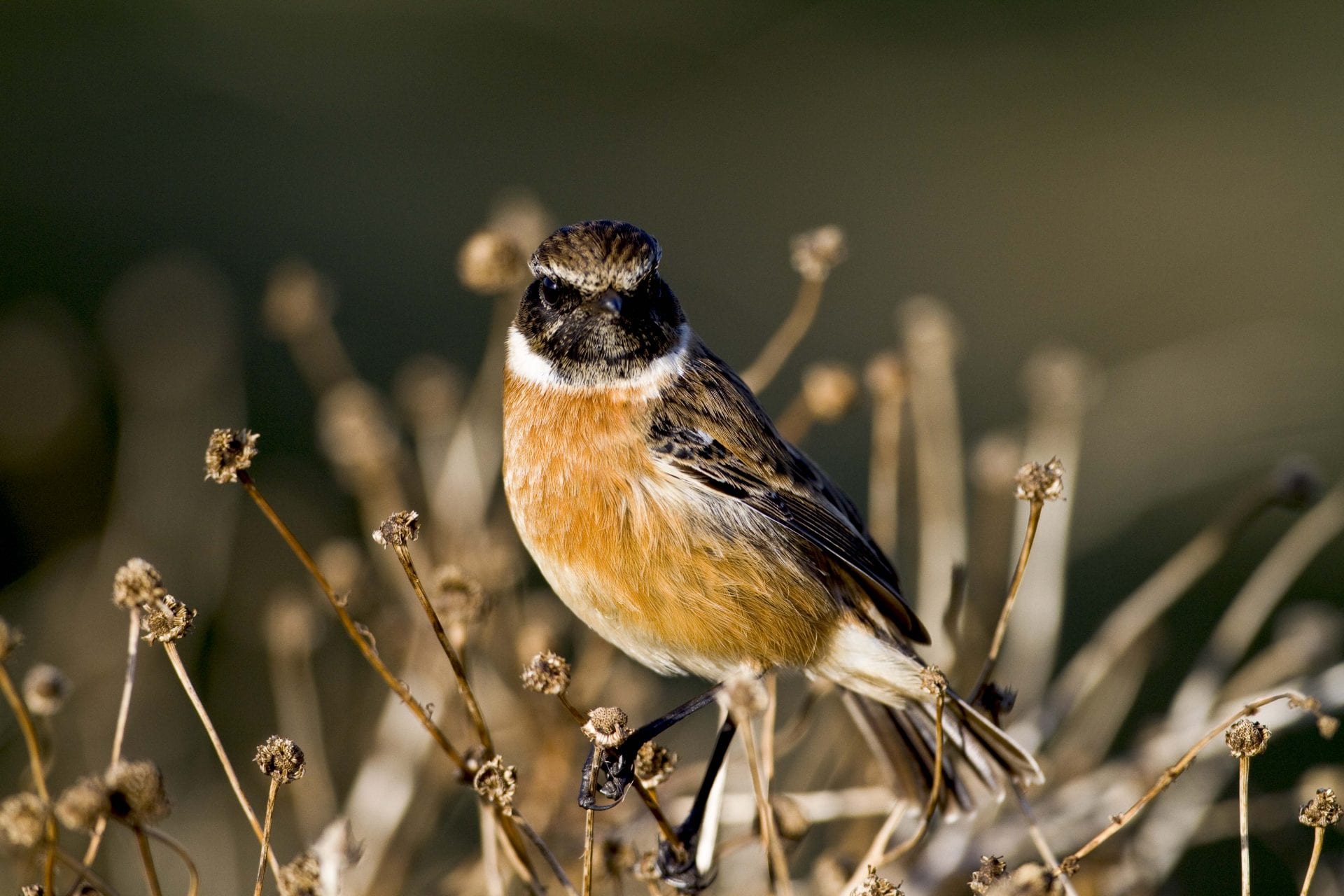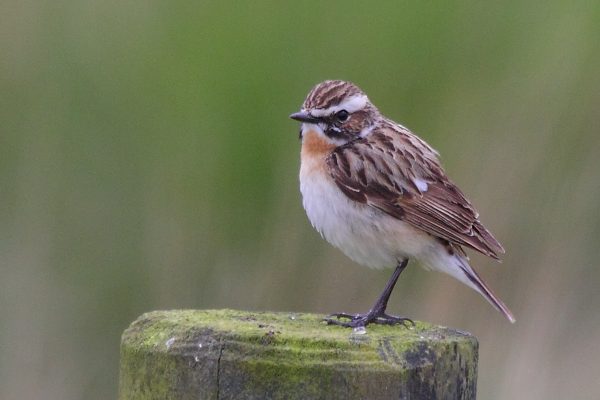
Whinchat
| Irish Name: | Caislín aitinn |
| Scientific name: | Saxicola rubetra |
| Bird Family: | Chats |
red
Conservation status
Conservation status
Status
Scarce but widespread summer visitor from April to September to uplands and scrubland throughout Ireland. Scarce passage in spring and autumn mainly to eastern and southern coasts.
Identification
The same size as Robin and Stonechat and broadly resembles the latter species. Frequently uses exposed perches like Stonechat. In all plumages has a grey-brown rump, with a broad black stripe at the base of the tail. The white base to the tail is not obvious. Adult males have a dark head with a broad white supercilium. The back is streaked brown and black. The underparts (throat and breast) are a rich orange-buff. In flight, shows two large white patches on the wing. Adult females are similar to adult male Whinchats, but have a buffy-brown head and beige supercilium. The underparts also tend top be less extensively orange. Juveniles resemble adult females, but have some dark spotting on the breast.
Voice
A soft "yu-tek-tek". Sings mainly at night and so infrequently heard. A distinctive series of whistled notes and rasping sounds, intermixed with mimicked calls and songs of other bird species.
Diet
Insects and other invertebrates.
Breeding
Breeds in a wide variety of habitats, including insect-rich meadows and bracken-covered slopes in uplands. The Irish breeding population has been declining in the last few years.
Wintering
Winters in tropical Africa.
Monitored by
Blog posts about this bird
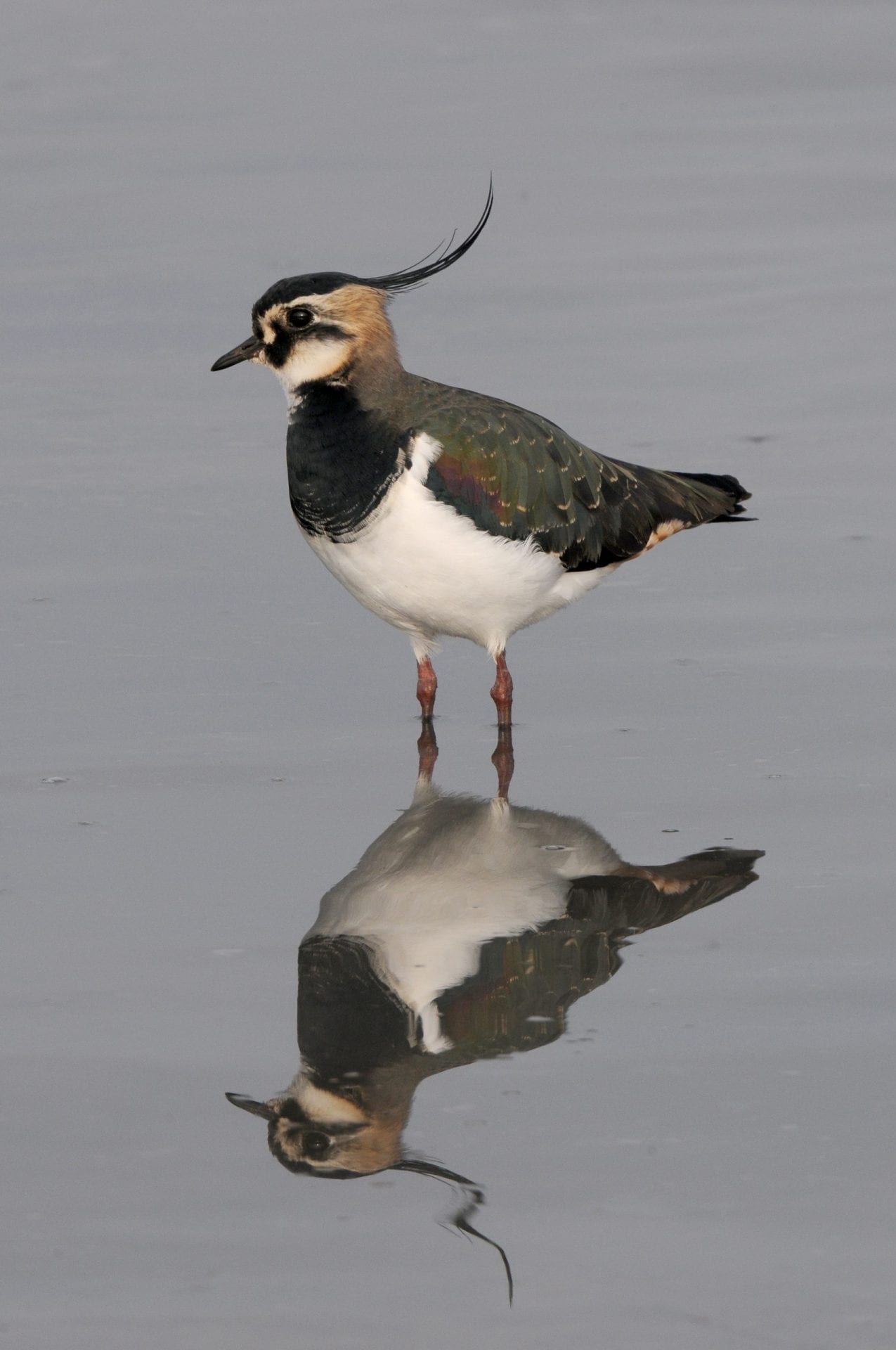
More than 3,600 scientists demand radical change to EU agriculture policy to protect nature
Scientists propose new ten step plan to reform the Common Agricultural Policy in order to fight the biodiversity and climate emergency
Scientists from all EU countries and beyond, including 58 from Ireland, declare that the European Commission’s proposal for the Common Agricultural Policy (CAP) post-2020 must be ”drastically improved” in order to reverse damage to the environment and to restore nature. They propose ten urgent actions to reform the CAP for long-term food security, biodiversity conservation, climate mitigation with farmers livelihoods central. If adopted, evidence-based, planet-friendly farming would finally begin to reverse the serious impacts to the environment from the CAP across the EU including Ireland.
The current CAP is a central driver of the biodiversity and climate emergencies, and is also failing on socio-economic challenges for rural areas [1] but it doesn’t have to be this way. Currently, the criteria to receive CAP payments are inadequate: the CAP is both unfairly distributed, and it funds practices that can cause significant biodiversity loss, climate change, and soil, land and water degradation.
In Ireland, CAP-supported results-based agri-environment schemes and European Innovation Projects that are trialling measures to improve on-farm biodiversity as well as climate measures are promising. Overall though, ambitious national agriculture intensification policies, supported by a problematic CAP structure, have worked against, and not with, objectives to halt and reverse biodiversity loss causing severe damage especially in farmland bird populations.
The scientists’ propose ten actions for the ecological transition of agriculture that are also applicable to Ireland. To achieve this, they say that the CAP should stop funding destructive practices and significantly step up support for farmers’ transition to nature-friendly farming, including at least 10% of all farmland area to be devoted to natural habitats, such as hedgerows, wetlands or wildflower margins and significant support for High Nature Value farming.
The scientists express concern that national governments and the Agriculture Committee of the European Parliament are diluting the environmental ambitions of the CAP in order “to defend the interests of a few at the expense of the many”. At present, the main factor determining how much “income support” a CAP recipient gets is the size of their farm: 80% of these payments goes to 20% of farmers. This means that farmers are stuck in a system where those with the most land receive most of the money, regardless of the environmental quality of their farming – with smaller farmers often with more high nature value farmland, losing out.
Welcoming the scientists’ declaration, Oonagh Duggan, Assistant Head of Advocacy at BirdWatch Ireland says:
“This statement from thousands of scientists is unprecedented and comes at a crucial point. Elected members of Dáil Éireann and the European Parliament declared a biodiversity, environmental and climate emergency in the last year and now they must act like it in upcoming CAP, EU budget, and EU Green Deal decision making”.
“All of the environmental indicators that relate to agriculture in Ireland are going in the wrong direction, with farmland birds declining, wild bee species threatened with extinction, water quality declining, and EU protected habitats in bad condition while agriculture greenhouse gas emissions are projected to continue to increase [2][3]. Our part of the planet cannot take this degradation and neither can farmers who depend on the environment too”.
“The CAP really needs three key things to restore nature on farmland: dedicated space for nature on all farms and ramped up support for High Nature Value farmers, money for nature protection and a just transition for farmers to environmentally friendly farming. Critically, Ireland’s next AgriFood 2030 strategy must provide the vision for this transition to environmentally friendly farming, otherwise we can expect further negative results for Ireland’s biodiversity”.
Donal Sheehan, dairy farmer from Castlelyons, Co. Cork says, “The present CAP is not fit for purpose. The next CAP needs to reward farmers who are delivering on biodiversity, water quality and carbon sequestration. All of these ecosystem services are as important as food production, but at present they seem to be considered worthless. Small famers need to be supported in such a way that every farmer is valued for their contribution to a vibrant rural economy.”
Paul Moore, tillage farmer from East Cork : “If the CAP is working so well for tillage farmers, why has the area of tillage nationally dropped by 20% since 2008? A change of focus in CAP could support populations of some of our most iconic farmland birds and help to sustain the tillage sector in Ireland."
Notes:
[1] As it stands, almost 60 billion euros of EU taxpayer money is spent every year on CAP subsidies that mostly fund intensive and factory farming. The CAP budget accounts for nearly 40% of the total EU budget. The intensive agriculture model it promotes directly leads to biodiversity loss, water and air pollution, and the over-extraction of water, and it also contributes to the climate crisis. Reforming the CAP is urgent: the EU has lost 57% of its farmland birds since 1980. Butterflies, bees and flying insects are also in serious decline.
[2] Two thirds of Ireland’s regularly occurring wild bird species are Red or Amber-listed Birds of Conservation Concern, including farmland birds like Curlew, Lapwing, Yellowhammer, Barn Owl etc. Colhoun K. & Cummins, S. 2013 Birds of Conservation Concern in Ireland 2014-19. Irish Birds 9:523-544 : available here https://birdwatchireland.ie/birds-of-conservation-concern-in-ireland-2014-2019/
[3] 85% of EU-protected habitats have ‘bad’ status, with 70% of those habitats impacted negatively by agriculture, according to the Article 17 report from the National Parks and Wildlife Service to the European Commission on the Status of Ireland’s EU-protected habitats and species available, pg 84 here :https://www.npws.ie/sites/default/files/publications/pdf/NPWS_2019_Vol1_Summary_Article17.pdf
NOTES
Evidence-based recommendations made by scientists and other stakeholders in Ireland (see CAP4Nature here).
What is wrong with the CAP?
Read the 260-page Fitness Check, indicating both environmental and socioeconomic weaknesses.
What makes the European Commission proposal for the CAP post-2020 weak?
Read Pe’er et al. 2019, science (open access links); download the 65-page supplementary materials (PDF)
Why are the scientists concerned about further watering down?
Read COMAGRI’s vote of 2 April 2019 for proposed amendments here, and the initial proposal made by the Member States’ Council here.
See an expression of concern by 15 NGOs on the watering down of CAP Conditionality rules here.
See Open Letter by professional societies of ornithologists, mammalogists, herpetologists and butterfly experts here.

